Matthew Hipple
5/31/2019
Asian American Pop Culture Studies
Final Paper
Baseball has always been in the fabric of pop culture since its inception. There have movies made about baseball, songs are written about baseball, baseball has been mentioned in numerous television shows. Baseball is the sport most used in pop culture and the reason is obvious. Baseball has been called the American sport and has been around for over 100 years. Celebrities will often be in attendance during the playoffs and during the World Series cheering on their respective teams. Baseball is in every aspect of pop culture that you could name and is one of the most widely recognized sports because of its involvement in pop culture.
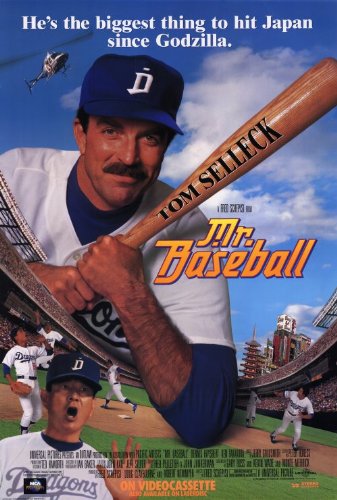
www.youtube.com/watch?v=nOwPr6kGHRE.
Baseball players themselves are celebrated, and they have a lot of clout, so if someone from another country plays in America, they are a star in America and their home country. There are many different countries represented in Baseball and it is the most diverse major sport in terms of representation. Before televisions, games could be heard being broadcast on the radio and results could be seen in the newspapers. Baseball players were the first big sports stars and were often seen with other celebrities of the time, look at Joe DiMaggio and his marriage to Marilyn Monroe.
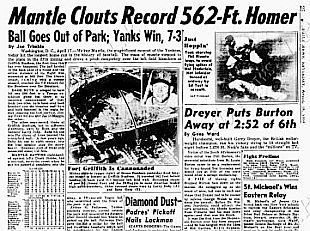
Ichiro Suzuki is the most marketable Asian athlete of all time. He is an inspiration to millions of people and he is one of the most influential athletes in any sport in history. There are many different traits that make an athlete marketable, and Ichiro exemplifies a lot of those that have made him one of the best Asian American athletes of all time. He had the opportunity to be a star here in America and Japan because he was able to be marketed in both countries and that significantly made him a bigger star.
What makes Ichiro an Asian American you may ask. Well, Asian American is a term that can mean a lot of different things and is actually a hybrid of many different identities. While not born in America, Ichiro can still be considered someone who is Asian American. He became famous in America after his success playing baseball in Japan. Asian American does not mean that you have to be born in America, it can be you moved here after you were born. If you are of Asian descent and live in America, you can be considered Asian American.
That’s not to say if you are born in America and are Asian you are not considered Asian American, its just that is not the only way to be Asian American. No two people are going to have the same definition of what it means to be Asian American, but I feel like if you move here and live in America you can be called an Asian American.
When he gets to opportunity, he will be a first ballot hall of famer based off his stats alone, not even taking in the impact he had culturally proved that Japanese baseball players can succeed playing in American baseball. He compared his early career training with his father to the Japanese anime series Star of the Giants, which mirrors what Ichiro went through.
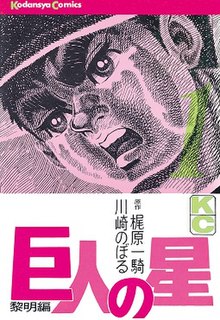
If you want an overview of why he was one of the best of all time, here is a summary of his life and stats in baseball to back up these claims. These stats prove he is the greatest Asian American athlete of all time regardless of sports and he broke down many barriers to allow other Asian athletes to play baseball in America. https://www.britannica.com/biography/Ichiro-Suzuki
There is a lot he had to overcome when he transitioned from Japanese baseball to American baseball due to the differences in the cultures and the differences in the game. In Japanese baseball, the ball itself is larger and harder than the baseballs used in America. A lot of players and analysts predicted that Ichiro would struggle to adapt because the pitchers throw faster and harder, the number of games was significantly more than what he was used to in Japan.
There are only twelve teams in the Japanese league as opposed to thirty teams in the American version of baseball. This is significant because, with fewer teams, you are more likely to recognize who you are playing. In America, this is more difficult to do because there are so many more teams that have to be prepared for and it is tougher to study all the different teams.
In Japan players usually play for one team their whole career while in American baseball players are often traded and play for different teams. This is significant because in Japan Ichiro only played for Orix Bluewave, but in Major League Baseball he played for the Seattle Mariners, the New York Yankees, and the Miami Marlins. A lot of people in Seattle were sad when Ichiro left the Mariners, but he came back to finish his career in Seattle.
www.youtube.com/watch?v=ZBhxpXtgcZY.
Another big difference is the fact that in America, fans will boo and heckle players of the opposing team to distract and harass them. In Japan, the fans are more respectful of the players.
“Stadium seating at Japanese baseball games is segregated by team, and you are not allowed to wear the opposing team’s colors when sitting in a designated fan area. One positive aspect, however, of seating all a team’s supporters together is that it makes it easier for fans to cheer on their team in unison. Japanese baseball fans even have dedicated chants and cheer songs that they sing for every player in the lineup.” (7 Ways Japanese Baseball Is Different from American Baseball).

So what exactly makes an Athlete marketable? According to the book Sports Marketing: The View of Industry Experts by Daniel Bruton, there are the five P’s to athlete marketing. “Product, Price, Place, Promotion, and Progress.” (64). The product is the athlete and how their image would help sell the product. There have many examples of this with the most famous being the George Foreman grill, which has sold over 100 million units since it was put on shelves. Putting a famous athlete with a product will benefit both sides because the person promoting will get paid and the product gets a boost from this famous person endorsing it and will sell more units.
Price is how much money will the athlete gain from giving their image to the product, and payment can either take the form of money or free product. Place refers to whether the product is a good fit for the person endorsing it. It has to make sense for the company and the athlete endorsing the product to be beneficial for both sides. Promotion is how the company goes about using the athlete to promote their product whether that is through television commercials or printed ads in a magazine.
Progress is the relationship between the brand and the person endorsing their product. If the relationship stays good, then the promotion will keep having the athlete endorse further products. If the relationship ends, then they will both part ways and the athlete will no longer be affiliated with that company.

There are many factors to consider besides just those five P’s listed in the book. You have to look at the person’s reach ability to markets and how much sway the person has. Ichiro is a cultural icon in Japan due to his success in baseball so he has a lot of reach ability because he can reach fans here in America and his home country of Japan, along with other Asian countries and his popularity can help baseball spread to other countries and become popular there as well.
Other factors such as interaction with fans and the media perception of someone should also be taken into account. Social media can also be a factor with engagement because through social media athletes can directly talk to fans and endorse certain products that those same fans might then buy because their favorite athlete is using the product. Ichiro has endorsed many products, especially in his home country of Japan.
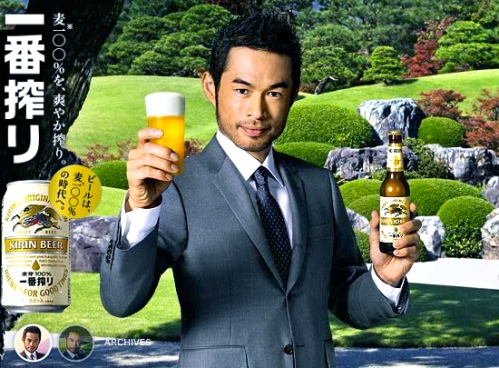
Ichiro had the distinction of being the first Japanese position player to play in the MLB. Other Japanese players, such as Hideo Nomo and Kazuhiro Sasaki, had played before him, but they were all pitchers. The first Japanese player in the Major Leagues was Masanori Murakami who played during the 1964 and 1965 season. I couldn’t believe this because that is in the middle of the Vietnam War, so I am really surprised a Japanese player played during this time.

I don’t even want to know how much he was heckled by fans who were against the war. The cultural impact he had culturally on the game of baseball cannot be understated. There were actually ten players that were in the MLB before Ichiro, but every one of them were pitchers. “The nonstop flow of Japanese visitors to Safeco Field for shopping and guided tours, at a time when the stadium is empty and spring training has just begun in Arizona, testifies in large part to the enduring star power — and profitability — of Ichiro.” (Ichiro Inc.: The M’s true impact player).
A lot of tourists enjoyed going to games and watching him play. It helped that he was very good and arguably the best player on the Mariners while he played there. It also helped there is a large Asian American population in Seattle. When coming to Seattle for a tour, Mariner games become one of the top places to see along with the Space Needle. Drawing in that many people is a testament to how popular Ichiro is in the Asian community that they choose to go watch him when they are visiting Seattle.
“The full value of Ichiro to the Mariners franchise is incalculable. But several figures provide an informative glimpse. Ichiro’s business empire includes a four-year, $44-million contract with the Mariners, $10 million worth of commercial endorsements, and a book, “Ichiro on Ichiro,” which has 20,000 copies in print selling for $23.95 apiece. Ichiro is also front and center for the Mariners’ marketing and advertising campaign, and thus he’s closely tied to ticket sales. Ichiro’s popularity in Japan was one of the key factors in Major League Baseball’s $275 million deal to broadcast games in that country. And Ichiro continues to draw Japanese tourists to Seattle; 81,000 visited last year.” (Ichiro Inc.: The M’s true impact player).

Ichiro generated a ton of money for himself and his team because his likeness was used for so many things by the Mariners. He was promoted on posters, programs, tickets, video games, and many more different memorabilia. This shows that Ichiro was very marketable and recognizable among the public and someone who could generate interest in the Mariners, even during times when they weren’t performing so well.
“Since joining the Mariners in 2001, the Japanese hitter has become a major revenue generator — for his team, for Major League Baseball, and for himself. His remarkable business impact spans everything from Mariners advertising, ticket sales and corporate sponsorships to Japanese broadcasting deals, tourism, publishing and merchandise. Even the sushi sold at Safeco bears his name in the form of the “Ichiroll.”” (Ichiro Inc.: The M’s true impact player).
He was a key factor in the games being shown in Japan and was on a level comparable to Michael Jordan, who is the most famous Basketball player of all time so that is no easy accomplishment. What is pretty insane to think about also, he was so good that his home country decided to change their pop culture in regards to baseball by starting to show Major League Baseball games on television. “All Mariners home games are broadcast in Japan, and MLB sells highlight-reel packages to television networks there. TV stations have been known to interrupt their programming to give updates on Ichiro’s daily performance during the season.” (Ichiro Inc.: The M’s true impact player).

It can’t be understated how important Ichiro is to Asian Americans and to pop culture in general. He was the first big Asian American athlete that was used in promotion for baseball. He would be featured front and center on the magazines and on ticket stubs, something that had never been done before with an Asian American Athlete. Almost anything you can think of that his likeness could be placed on was done.
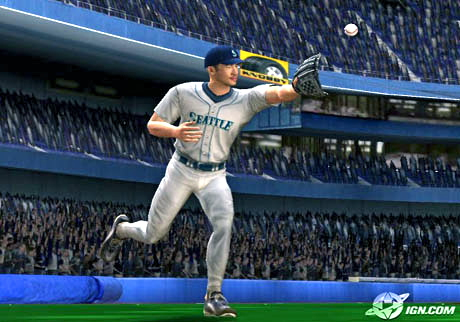
That proves that he was a major force in pop culture because he was used so prominently. His likeness was even used for an anime and manga called Major, which is a really big deal because anime is very popular in Japan. To have your likeness used for the character model in an anime means you are a very big deal and very popular.
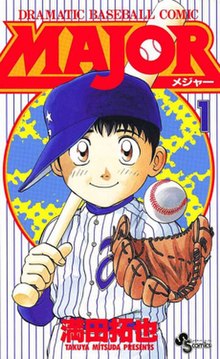
“The city of Seattle, which usually splits its sports enthusiasm between the Seahawks and the University of Washington’s football team, went Ichi-Gaga, prompting many Asian-Americans in the community to come forward with praise for the city’s embrace of a Japanese sports idol. Shawn Wong, a professor of English at the University of Washington, went as far as to credit Ichiro with a heightening of cultural awareness within the city.” (Immigrant Misappropriations: The Importance of Ichiro).

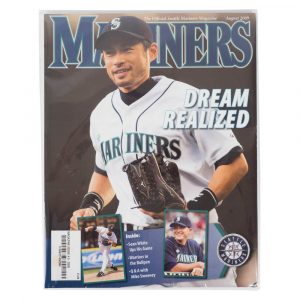
He was also used for a lot of commercials for the Mariners and the other various teams that he played for and he was used for some endorsement commercials for different products. He also had some commercials shot that played in Japan, which just shows his popularity around the globe here in America and also in Japan. He was so good that they chose him to be in these commercials because he was someone who became so recognizable because of his talent and had a long-lasting impact on the sport.
www.youtube.com/watch?v=1uDqqdzeoIk.
www.youtube.com/watch?v=5ash09cVOno.
When he retired earlier this year, there was an out pour of gratitude for him for his influence on baseball and the pop culture impact he had. This is a link to his final game in Japan and just listen to how loud everyone is in respect for everything he did. There can never be another player like him because he broke so many barriers down in baseball and proved that Japanese talent can succeed in American baseball. So many Asian players have played after him and if it weren’t for him perhaps they wouldn’t be. If he came over and did not do well, that would have made it even more difficult for other Asian baseball players to come over to America to play.
Words can't describe the scene at the Tokyo Dome over 30 minutes after tonight's game ended.
So here's 3.5 minutes of unedited footage from Ichiro's curtain call. #ThanksIchiro pic.twitter.com/Vsbvk5j5MR
— Seattle Mariners (@Mariners) March 21, 2019
Baseball has always been in the pop culture’s eye since it was founded. Countless players have become famous because of their abilities and Ichiro is among the most famous of them all. Because of Ichiro, Asian and American pop culture got a cross current and brought their two cultures together and that is a big deal. Countless Magazine and television appearances here in America and in Japan, millions of dollars in endorsement money, and an inspiration to many different people. There is no question that baseball, and Ichiro specifically, will forever be engraved as pop culture icons.
Works Cited
“2003イチロー栄養ドリンクCM – Ichiro Suzuki Commercial in Japan.” YouTube, YouTube, 26 Mar. 2007, www.youtube.com/watch?v=1uDqqdzeoIk.
赤ペン先生 “『イチロー長者4位 CMで700万ドル』.” 赤ペン先生のブログ, Ameba, 23 Mar. 2012, ameblo.jp/redpenteacher/entry-11201421586.html.
Backtime. “Ichirolling!” Ichirolling!, 1 Jan. 1970, backtimetv.blogspot.com/2012/09/ichirolling.html.
Bagarino, Christine. “7 Ways Japanese Baseball Is Different from American Baseball.” Culture Trip, 1 Mar. 2018, theculturetrip.com/asia/japan/articles/7-ways-japanese-baseball-is-different-from-american-baseball/.
Britannica, The Editors of Encyclopaedia. “Ichiro Suzuki.” Encyclopædia Britannica, Encyclopædia Britannica, Inc., 22 Mar. 2019, www.britannica.com/biography/Ichiro-Suzuki.
Bruton, Daniel J. Sports Marketing the View of Industry Experts. Jones & Bartlett Learning, 2016.
Cieslik, Dylan. “‘Centerfield’ – John Fogerty (w/ Lyrics).” YouTube, YouTube, 2 Dec. 2011, www.youtube.com/watch?v=nOwPr6kGHRE.
Colleen. “Difference Between.” Difference Between Similar Terms and Objects, 25 Dec. 2010, www.differencebetween.net/miscellaneous/difference-between-american-and-japanese-baseball/.
“EBay Alert: 1990s Japanese VHS Tapes.” Super Ichiro Crazy!, 21 July 2011, superichirocrazy.wordpress.com/2011/07/20/ebay-alert-1990s-japanese-vhs-tapes/.
Engleman, Eric. “Ichiro Inc.: The M’s True Impact Player.” Bizjournals.com, 27 Feb. 2005, www.bizjournals.com/seattle/stories/2005/02/28/story1.html.
Graczyk, Wayne. “Can Upgraded Home Stadiums Give Boost to BayStars, Eagles?” The Japan Times, www.japantimes.co.jp/sports/2015/12/12/baseball/can-upgraded-home-stadiums-give-boost-baystars-eagles/.
“Ichiro in Video Games #1.” Super Ichiro Crazy!, 3 Sept. 2011, superichirocrazy.wordpress.com/2011/06/28/ichiro-in-video-games/.
“Ichiro Suzuki – Japan Highlights.” YouTube, YouTube, 19 May 2017, www.youtube.com/watch?v=ZBhxpXtgcZY.
Jr, Tony Holden. “Tony Holden Jr (@TonyjrJr).” Twitter, Twitter, 7 May 2014, twitter.com/tonyjrjr.
Kang, Jay Caspian. “Immigrant Misappropriations: The Importance of Ichiro.” Grantland, 23 Jan. 2015, grantland.com/features/importance-ichiro/.
Legalwatercooler. “The 5 Ps of Legal Marketing Now Includes Pricing.” The Legal Watercooler, 24 Oct. 2017, www.legalwatercoolerblog.com/2013/02/25/the-ps-of-legal-marketing-now-includes-pricing/.
“Major (Manga).” Wikipedia, Wikimedia Foundation, 14 Apr. 2019, en.wikipedia.org/wiki/Major_(manga).
Mariners, Seattle. “2007 – Working the Zone.” YouTube, YouTube, 9 Nov. 2015, www.youtube.com/watch?v=5ash09cVOno.
Mariners, Seattle. “Words Can’t Describe the Scene at the Tokyo Dome over 30 Minutes after Tonight’s Game Ended. So Here’s 3.5 Minutes of Unedited Footage from Ichiro’s Curtain Call. #ThanksIchiro Pic.twitter.com/Vsbvk5j5MR.” Twitter, Twitter, 21 Mar. 2019, twitter.com/Mariners/status/1108743614044110849?ref_src=twsrc^tfw|twcamp^tweetembed|twterm^1108743614044110849&ref_url=https://www.thenewstribune.com/sports/mlb/seattle-mariners/article228228074.html.
“Mickey Mantle – The Real Natural.” John J. Dwyer: Oklahoma Author & Historian, John J. Dwyer: Oklahoma Author & Historian, 9 Dec. 2018, www.johnjdwyer.com/single-post/2018/12/07/mickey-mantle-the-real-natural.
“MLB NBA NFL Goods Shop: MLB Mariners Ichiro Mariners Magazine September, 2009 Issue.” MLB NBA NFL Goods Shop: MLB Mariners Ichiro Mariners Magazine September, 2009 Issue | Rakuten Global Market, global.rakuten.com/en/store/selection-int/item/mlb-181020god05/.
“Profiles.” Dante A. Ciampaglia, danteaciampaglia.com/profiles/.
“Seattle Mariners.” THE BASEBALL READER, 27 Mar. 2019, baseballreader.com/seattle-mariners/#jp-carousel-1206.
SportsRadioKJR. “Alex Returns to Seattle.” YouTube, YouTube, 8 Nov. 2011, www.youtube.com/watch?v=yUO5UMvEw-4.
“Sous Titres Mr. Baseball.” Téléchargement Gratuit Des Sous-Titres Français, www.vostfr.club/films/1992-mr-baseball.html.
“Star of the Giants.” Wikipedia, Wikimedia Foundation, 4 May 2019, en.wikipedia.org/wiki/Star_of_the_Giants.
